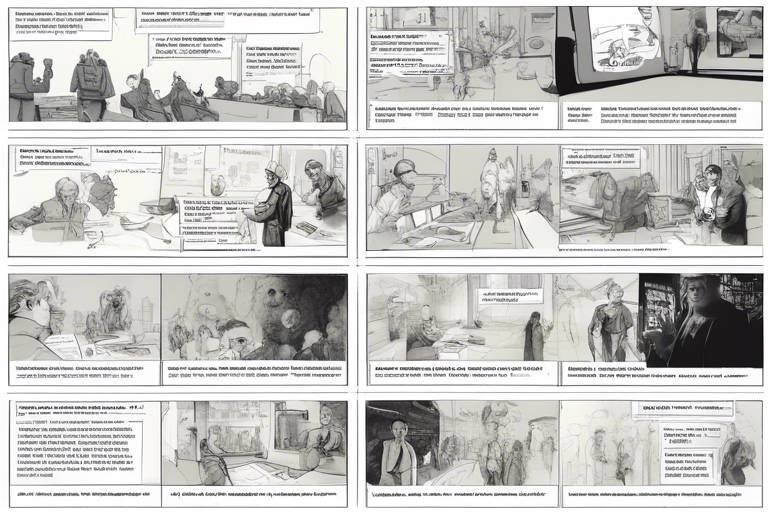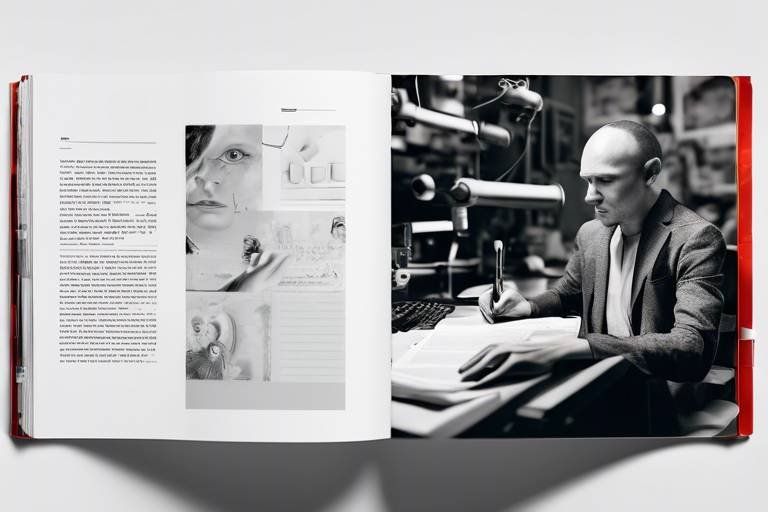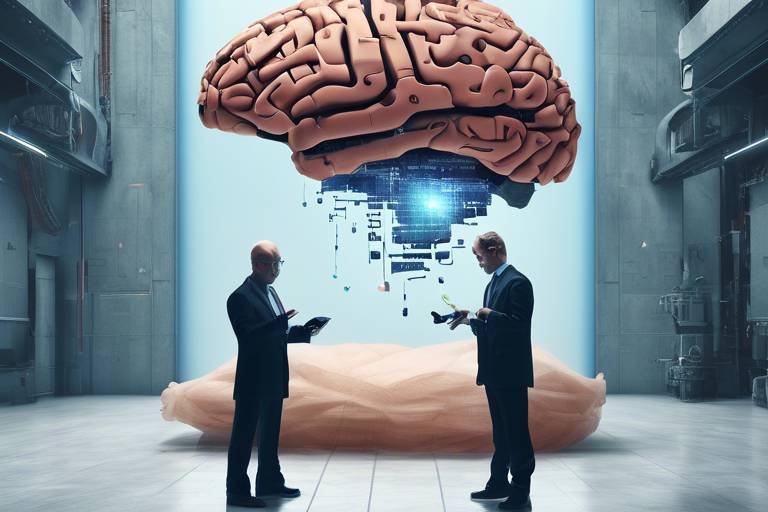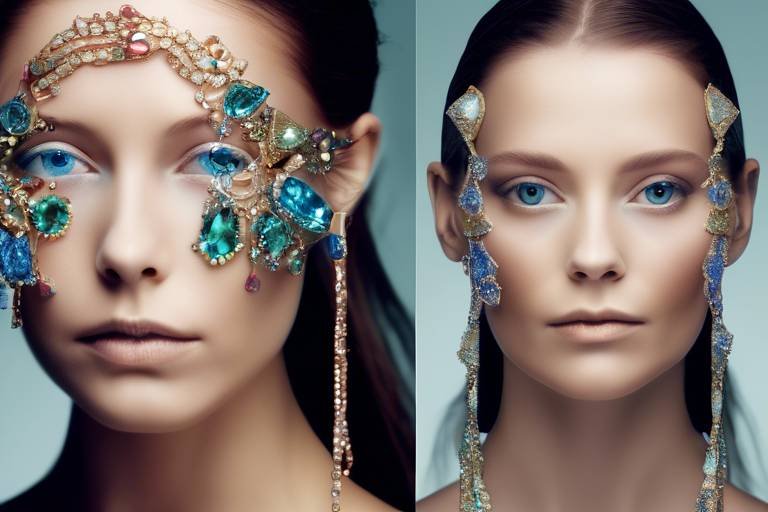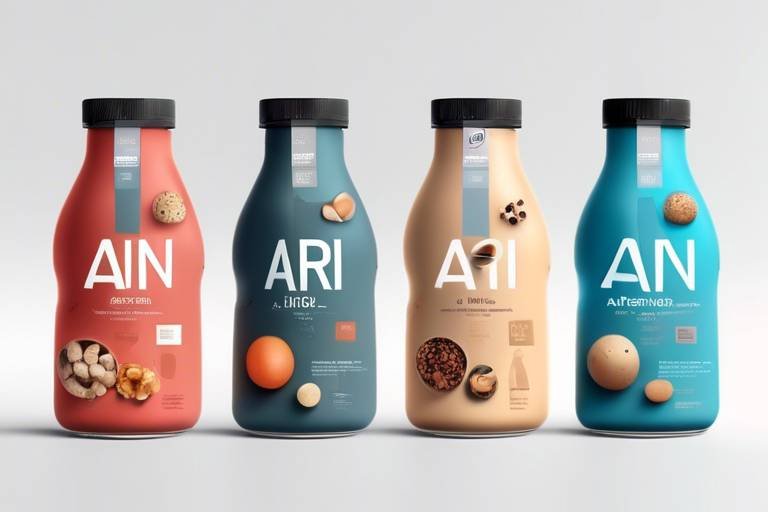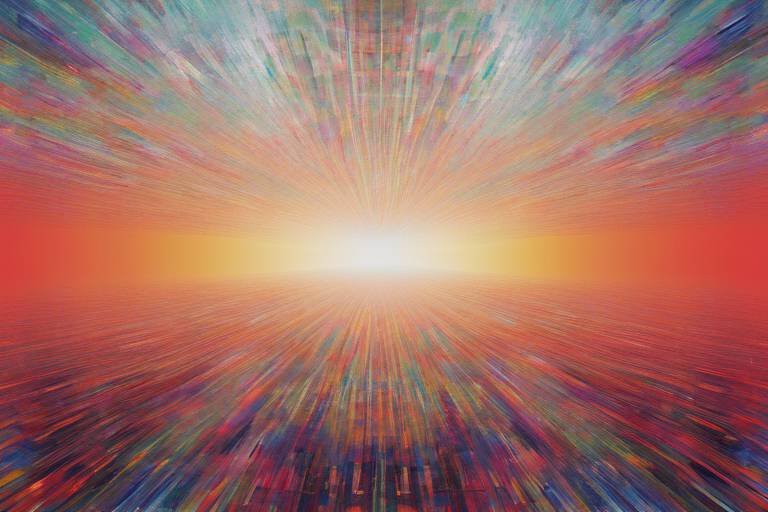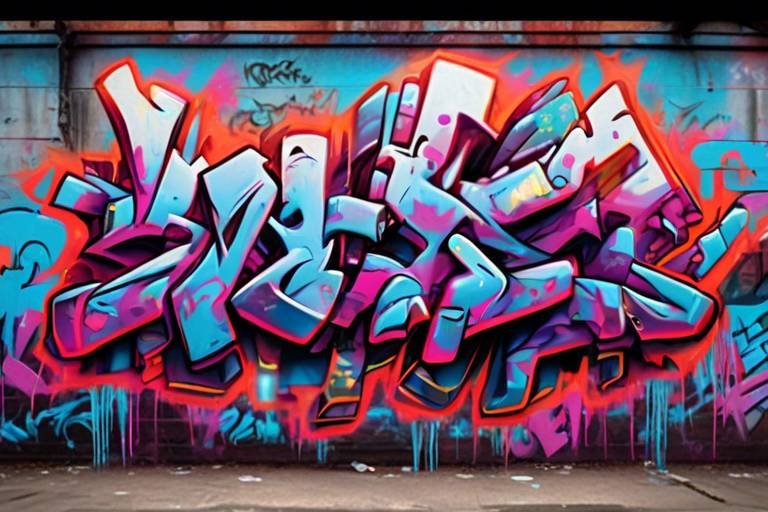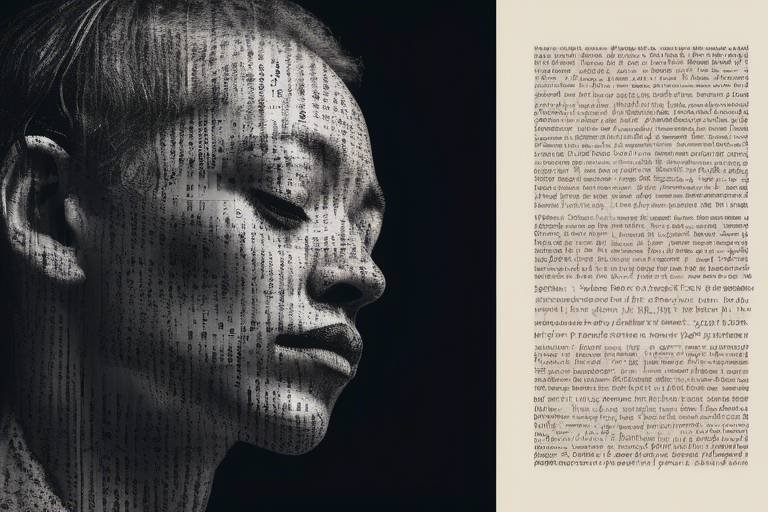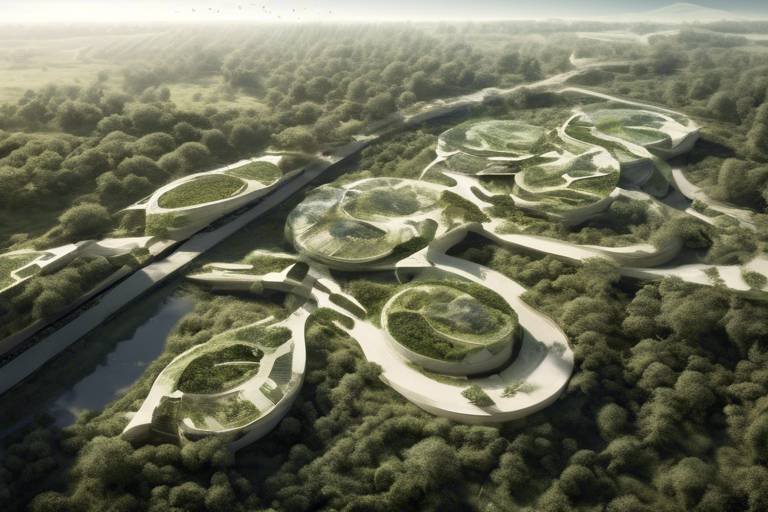AI in Storyboarding: The Future of Film Making
As we stand on the brink of a technological revolution, artificial intelligence (AI) is making waves in various industries, and filmmaking is no exception. The integration of AI into the storyboarding process is not just a passing trend; it's a transformative shift that is reshaping how filmmakers visualize their stories. Imagine a world where your ideas can be translated into visual narratives with the click of a button, where collaboration transcends geographical barriers, and where creativity knows no bounds. This is the future of filmmaking, and AI is at the helm, steering us toward uncharted waters of creativity and efficiency.
In the past, storyboarding was often a tedious and time-consuming process, requiring artists to sketch scenes manually, sometimes leading to misinterpretations of the script. But with AI, filmmakers can now harness the power of sophisticated algorithms to generate preliminary layouts and concepts with remarkable speed and accuracy. This not only saves time but also opens up new avenues for creative exploration. Instead of spending countless hours on basic sketches, artists can focus on refining their vision and enhancing the emotional impact of their narratives.
Moreover, AI's role in storyboarding extends beyond mere automation. It acts as a catalyst for collaboration, allowing teams to work together in real-time, regardless of their physical locations. Imagine a screenwriter in New York, a director in Los Angeles, and a storyboard artist in London, all contributing to the same project simultaneously. AI tools facilitate this seamless interaction, enabling filmmakers to share ideas, provide feedback, and iterate on designs instantaneously. This level of collaboration not only enhances the creative process but also enriches the final product, resulting in a more cohesive and compelling story.
As we delve deeper into the implications of AI on visual storytelling, it's essential to recognize that while the technology can enhance creativity and efficiency, it also presents challenges. Filmmakers must navigate the delicate balance between leveraging AI's capabilities and preserving their unique artistic vision. The future of filmmaking is bright, but it requires careful consideration of how we integrate these powerful tools into our creative processes.
AI technologies are revolutionizing the way filmmakers approach storyboarding, offering tools that streamline the creative process and enhance visual planning. This section delves into the various applications of AI in storyboarding.
AI-driven storyboarding offers numerous advantages, including increased efficiency, improved accuracy, and enhanced collaboration. This section examines how these benefits impact the filmmaking process and the overall quality of the final product.
AI tools help filmmakers save time during pre-production by automating repetitive tasks and generating visual concepts quickly. This subsection highlights the time-saving aspects of AI in the early stages of filmmaking.
AI can create preliminary scene layouts based on scripts, allowing filmmakers to visualize their ideas without extensive manual drawing. This subheading discusses the technology behind automated scene generation.
AI facilitates real-time collaboration among filmmakers, enabling teams to work together seamlessly, regardless of location. This section explores the impact of AI on collaborative storyboarding efforts.
AI is not just a tool for efficiency; it also enhances creativity by providing unique visual suggestions and innovations. This subsection discusses how AI can inspire filmmakers to think outside the box.
Despite its advantages, AI in storyboarding presents challenges, such as reliance on technology and potential loss of artistic touch. This section addresses the limitations filmmakers face when integrating AI into their creative processes.
Filmmakers must find a balance between utilizing AI tools and maintaining their artistic vision. This subsection examines the importance of preserving creativity in an increasingly automated environment.
The use of AI in filmmaking raises ethical questions about authorship and originality. This section discusses the implications of AI-generated content on the creative industry and the need for ethical guidelines.
- What is AI in storyboarding? AI in storyboarding refers to the use of artificial intelligence technologies to automate and enhance the process of creating storyboards for films, allowing for quicker visualizations and improved collaboration.
- How does AI improve efficiency in filmmaking? AI improves efficiency by automating repetitive tasks, generating preliminary scene layouts, and facilitating real-time collaboration among team members, which saves time in the pre-production phase.
- Can AI replace human creativity in filmmaking? While AI can enhance creativity by providing unique suggestions, it is essential for filmmakers to maintain their artistic vision and not rely solely on technology for creative decisions.
- What are the ethical concerns surrounding AI in filmmaking? Ethical concerns include questions about authorship, originality, and the potential for AI-generated content to overshadow human creativity, necessitating the development of guidelines to navigate these issues.

The Role of AI in Storyboarding
Artificial Intelligence (AI) is making waves in various industries, and filmmaking is no exception. When it comes to storyboarding, AI technologies are revolutionizing the way filmmakers visualize their narratives. Traditionally, storyboarding has been a labor-intensive process, often requiring countless hours of sketching and revisions. However, with the advent of AI, this process is becoming more streamlined and efficient. Imagine being able to generate storyboard frames in a matter of minutes instead of days! This is no longer just a dream; it's a reality.
AI tools are equipped with advanced algorithms that can analyze scripts and generate visual representations of scenes. By inputting a screenplay, filmmakers can receive preliminary storyboard layouts that help them visualize their ideas without the need for extensive manual drawings. This capability not only saves time but also reduces the stress associated with the creative process. Filmmakers can focus on refining their stories rather than getting bogged down in the nitty-gritty of drawing each frame.
Moreover, AI doesn't just stop at generating images; it also assists in enhancing the overall storytelling process. For instance, AI can suggest camera angles, lighting setups, and even color palettes that align with the mood of the script. This means that filmmakers can explore a range of visual styles and approaches they might not have considered otherwise. The technology acts as a creative partner, pushing the boundaries of traditional storytelling and encouraging filmmakers to think outside the box.
One of the most exciting aspects of AI in storyboarding is its ability to facilitate real-time collaboration. In today's globalized film industry, teams often work from different locations, making it challenging to maintain a cohesive vision. However, AI-driven tools allow filmmakers to collaborate seamlessly, sharing ideas and edits instantly. Imagine a director in Los Angeles discussing a scene with a storyboard artist in London, all while making real-time adjustments to the storyboard. This level of collaboration not only enhances creativity but also ensures that everyone involved in the project is on the same page.
In summary, AI is playing a pivotal role in transforming the storyboarding process in filmmaking. By streamlining visual planning, enhancing creativity, and facilitating collaboration, AI tools are setting the stage for a new era of visual storytelling. As filmmakers embrace these technologies, we can expect to see innovative narratives and stunning visuals that captivate audiences like never before.

Benefits of AI-Driven Storyboarding
In the ever-evolving landscape of filmmaking, the integration of artificial intelligence into storyboarding has become a game-changer. Filmmakers are now discovering that AI-driven storyboarding offers a plethora of advantages that not only enhance the creative process but also streamline production timelines. Imagine being able to visualize your ideas rapidly, collaborate with your team in real-time, and reduce the tedious tasks that often bog down the creative flow. It's like having a supercharged assistant who never tires and always brings fresh ideas to the table!
One of the most significant benefits of AI-driven storyboarding is its ability to increase efficiency. Traditional storyboarding can be a labor-intensive process, requiring countless hours of sketching and revisions. With AI tools, filmmakers can automate many of these repetitive tasks, allowing them to focus on what truly matters – the story. For instance, AI can analyze scripts and generate preliminary scene layouts quickly, providing a visual representation that can be easily modified. This not only saves time but also allows for a more dynamic approach to storytelling.
Moreover, the accuracy of AI-generated storyboards is another compelling advantage. By utilizing advanced algorithms, AI can help ensure that the visual elements align closely with the script's intentions. This precision minimizes the risk of miscommunication among team members, leading to a more cohesive final product. Filmmakers can trust that the AI's interpretations are grounded in data and insights, which can be particularly beneficial when working with complex narratives.
Collaboration is another area where AI shines brilliantly. With real-time collaboration tools, filmmakers can work together seamlessly, no matter where they are in the world. Imagine a director in Los Angeles brainstorming with a cinematographer in London, all while an AI tool updates the storyboard in real-time. This level of connectivity fosters creativity and innovation, as ideas can be shared and refined instantly. It’s like having a virtual brainstorming session where everyone’s input is valued and integrated on the fly!
Additionally, the creative potential unleashed by AI cannot be overlooked. AI-driven tools can offer unique visual suggestions that filmmakers may not have considered. By analyzing vast amounts of visual data, AI can propose innovative concepts that inspire filmmakers to think outside the box. This can lead to groundbreaking visual storytelling that captivates audiences in ways previously thought impossible. It's akin to having a creative partner who constantly challenges you to push your boundaries and explore new horizons.
In summary, the benefits of AI-driven storyboarding are multifaceted, encompassing efficiency, accuracy, enhanced collaboration, and an infusion of creativity. As filmmakers continue to embrace these technologies, the future of visual storytelling looks brighter than ever. The integration of AI into the storyboarding process not only enhances the quality of the final product but also transforms the way stories are told, ensuring that creativity and innovation remain at the forefront of filmmaking.
- What is AI-driven storyboarding? AI-driven storyboarding refers to the use of artificial intelligence tools to assist filmmakers in creating storyboards more efficiently and creatively.
- How does AI increase efficiency in storyboarding? AI automates repetitive tasks, generates preliminary scene layouts, and allows for quick modifications, saving time during the pre-production phase.
- Can AI enhance creativity in filmmaking? Yes! AI can provide unique visual suggestions and innovative concepts that inspire filmmakers to explore new ideas.
- What are the challenges of using AI in storyboarding? Some challenges include potential reliance on technology and the risk of losing the human touch in artistic expression.
- Are there ethical concerns with AI-generated content? Yes, the use of AI raises questions about authorship, originality, and the need for ethical guidelines in the creative industry.

Efficiency in Pre-Production
In the fast-paced world of filmmaking, efficiency is paramount, especially during the pre-production phase. This is where the magic begins—where ideas are transformed into tangible plans. With the advent of AI-driven tools, filmmakers are now able to streamline their workflows like never before. Imagine being able to visualize scenes without spending countless hours sketching or drafting. AI technology can automate repetitive tasks, allowing creative minds to focus on what they do best: storytelling.
One of the standout features of AI in pre-production is its ability to generate visual concepts rapidly. Filmmakers can input scripts or story outlines, and AI algorithms can produce preliminary scene layouts in a matter of minutes. This not only saves time but also enhances the quality of the visual planning process. For instance, consider the traditional method of storyboarding, where artists painstakingly illustrate each frame. With AI, this process is revolutionized. Instead of manually creating each scene, filmmakers can simply tweak AI-generated layouts to better fit their vision.
Moreover, AI tools offer a level of collaboration that was previously unimaginable. Teams can work together in real-time, sharing ideas and adjustments instantaneously, regardless of their physical locations. This is especially beneficial in an industry that often involves multiple stakeholders—from directors and producers to cinematographers and production designers. The ability to have everyone on the same page, with access to the latest updates and visual materials, fosters a more cohesive creative environment.
To illustrate the impact of AI on efficiency in pre-production, let’s take a look at some key advantages:
- Time Savings: Automating scene generation and visual planning allows filmmakers to allocate more time to creative discussions and less to logistical challenges.
- Improved Accuracy: AI can minimize human error in scene layouts, ensuring that the visual representation aligns closely with the script's intent.
- Enhanced Collaboration: Real-time updates and shared access to storyboards mean that feedback can be incorporated quickly, improving the overall workflow.
Ultimately, the integration of AI in pre-production is akin to having a powerful assistant that not only speeds up the process but also enhances the creative output. As filmmakers embrace these innovative tools, the possibilities for storytelling expand exponentially, paving the way for a new era in visual storytelling.

Automated Scene Generation
Imagine a world where filmmakers can visualize their stories without spending hours sketching out each scene. is making that dream a reality. This innovative technology leverages artificial intelligence to create preliminary scene layouts directly from scripts. By analyzing the text, AI can interpret the story's context and generate visual representations that align with the filmmaker's vision. It's like having a creative assistant who never tires and can churn out concepts at lightning speed!
With automated scene generation, filmmakers can bypass the tedious manual drawing process. Instead, they can focus on refining their ideas and enhancing their storytelling. This technology works by using sophisticated algorithms that understand narrative structures, character interactions, and even emotional tones. For instance, if a script describes a tense confrontation between two characters in a dimly lit alley, the AI can produce a visual layout that captures that essence, complete with lighting and camera angles.
Moreover, automated scene generation can significantly reduce the time spent in the pre-production phase. Traditional methods often require multiple iterations and extensive feedback loops, which can delay timelines and inflate budgets. However, with AI, filmmakers can quickly generate multiple scene options, allowing for rapid feedback and adjustments. This not only speeds up the process but also fosters a more dynamic creative environment where ideas can evolve organically.
To illustrate the impact of automated scene generation, consider the following table that compares traditional storyboarding methods with AI-driven approaches:
| Aspect | Traditional Storyboarding | Automated Scene Generation |
|---|---|---|
| Time Required | Hours to Days | Minutes to Hours |
| Iteration Speed | Slow | Fast |
| Visual Accuracy | Depends on Artist Skill | Consistent and High Quality |
| Collaboration | Limited to In-Person Meetings | Real-Time Collaboration Possible |
As we can see, automated scene generation not only enhances efficiency but also elevates the overall quality of the storyboarding process. Filmmakers can experiment with different visual styles and compositions without the constraints of traditional methods. This newfound freedom encourages creativity and innovation, leading to more compelling visual storytelling.
However, it’s essential to remember that while AI can generate scenes, the human touch is irreplaceable. Filmmakers still play a crucial role in curating and refining these AI-generated layouts to ensure they align with their artistic vision. The synergy between technology and human creativity is what will ultimately drive the future of filmmaking.
In conclusion, automated scene generation is not just a tool; it’s a game-changer that can redefine how stories are visualized in the film industry. As filmmakers embrace this technology, they unlock new possibilities for creativity and storytelling, paving the way for a more innovative future.
- What is automated scene generation? Automated scene generation uses AI to create visual layouts from scripts, helping filmmakers visualize their stories quickly and efficiently.
- How does AI improve the storyboarding process? AI enhances the storyboarding process by automating repetitive tasks, allowing for faster iterations and improved collaboration among team members.
- Can AI replace human creativity in filmmaking? While AI can assist in generating ideas and visuals, the unique artistic vision of filmmakers remains irreplaceable and essential for compelling storytelling.
- What are the benefits of using AI in pre-production? Benefits include increased efficiency, reduced time spent on manual tasks, and the ability to explore various creative options rapidly.

Real-Time Collaboration Tools
In the fast-paced world of filmmaking, collaboration is key, and AI-driven real-time collaboration tools are changing the game. Imagine a scenario where a director, a cinematographer, and a production designer can all work on the same storyboard simultaneously, regardless of where they are in the world. This is not just a dream; it’s becoming a reality thanks to advancements in AI technology. These tools allow teams to share ideas, visuals, and feedback instantly, making the creative process not only faster but also more dynamic.
One of the most exciting aspects of these AI collaboration tools is their ability to integrate various elements of the filmmaking process. For instance, a filmmaker can upload a script, and the AI can suggest visual elements or even generate preliminary sketches based on the text. This immediate feedback loop allows for a more fluid exchange of ideas. Instead of waiting days or weeks for revisions, teams can see changes implemented in real-time, fostering a more collaborative atmosphere.
Moreover, these tools often come equipped with features such as:
- Cloud-Based Accessibility: Team members can access storyboards and scripts from anywhere, ensuring that distance is no longer a barrier to creativity.
- Version Control: AI tools manage different versions of storyboards, allowing filmmakers to track changes and revert to earlier drafts if needed.
- Instant Feedback Mechanisms: Filmmakers can receive immediate input from their peers, making it easier to refine ideas on the spot.
As we embrace these innovative tools, it’s essential to recognize that they do not replace the human touch in filmmaking; rather, they enhance it. By automating mundane tasks and facilitating communication, AI allows filmmakers to focus on what they do best—telling compelling stories. The synergy between technology and creativity is not just beneficial; it’s essential for the future of visual storytelling.
In summary, real-time collaboration tools powered by AI are revolutionizing the way filmmakers work together. They break down geographical barriers, streamline communication, and ultimately lead to a richer, more collaborative creative process. As filmmakers continue to explore these advanced technologies, the possibilities for innovation in storytelling are endless.
- What are real-time collaboration tools? Real-time collaboration tools are software applications that allow multiple users to work together simultaneously on projects, sharing ideas and making changes instantly.
- How does AI enhance collaboration in filmmaking? AI enhances collaboration by providing instant feedback, automating repetitive tasks, and integrating various elements of the filmmaking process, allowing for a more fluid exchange of ideas.
- Can AI replace human creativity in filmmaking? No, AI is designed to assist and enhance human creativity, not replace it. Filmmakers still maintain their artistic vision while leveraging AI tools for efficiency.

Enhancing Creativity with AI
When we think about creativity, we often picture artists hunched over canvases or writers pouring their souls into a blank page. But what if I told you that artificial intelligence (AI) is stepping into this age-old realm, not as a replacement, but as a powerful ally? Imagine having a brainstorming partner that never tires, always offers fresh perspectives, and can generate ideas at lightning speed. This is the magic of AI in storyboarding, and it’s transforming the filmmaking landscape in ways we never thought possible.
AI tools can analyze vast amounts of data, pulling inspiration from countless films, artistic styles, and cinematic techniques. This means filmmakers can access a treasure trove of visual suggestions that might never have crossed their minds. For instance, by inputting a basic storyline or character description, AI can generate a myriad of visual concepts, styles, and even potential scenes that align with the filmmaker's vision. It’s like having a creative brainstorming session with the collective genius of the entire film industry!
Moreover, AI can help filmmakers explore unconventional ideas that challenge traditional storytelling norms. For example, consider the impact of AI-generated visuals on genre-blending films. A filmmaker might be working on a sci-fi romance and, through AI assistance, discover unique visual motifs that combine elements from both genres, creating a fresh narrative that captivates audiences. This synergy between human creativity and AI’s analytical prowess can lead to groundbreaking storytelling.
But let’s not forget the human element. While AI can suggest and generate, the heart of storytelling remains deeply human. Filmmakers can use AI-generated ideas as a springboard for their creativity, allowing them to take risks and venture into new artistic territories. Think of it as a collaborative dance, where AI provides the rhythm, and the filmmaker adds their unique flair to create a masterpiece.
In addition to enhancing creativity, AI also fosters collaboration among creative teams. When multiple artists, writers, and directors are involved in a project, AI can serve as a central hub for sharing ideas and visual concepts. This real-time collaboration means that everyone can contribute and build upon each other’s ideas, leading to a richer and more diverse creative process. Imagine a virtual brainstorming session where everyone can instantly visualize concepts and make adjustments on the fly—this is the future of collaborative filmmaking.
As we embrace AI’s role in enhancing creativity, it’s essential to remember that it is a tool, not a crutch. Filmmakers must remain vigilant in preserving their unique artistic voice while leveraging AI’s capabilities. The key lies in finding that sweet spot where technology and artistry intersect, creating a workflow that amplifies human creativity without overshadowing it.
In conclusion, AI is not just reshaping the technical aspects of filmmaking; it’s also enhancing the very essence of creativity. By providing new ideas, fostering collaboration, and inspiring filmmakers to push their boundaries, AI is paving the way for a new era of storytelling that is as innovative as it is exciting. So, the next time you sit down to storyboard, consider inviting AI into your creative process—it might just surprise you with the possibilities it unveils!
- How does AI enhance creativity in filmmaking? AI provides unique visual suggestions and helps filmmakers explore unconventional ideas, allowing for innovative storytelling.
- Can AI replace human creativity? No, AI is a tool that assists in the creative process, but the heart of storytelling remains deeply human.
- What are the benefits of AI in collaborative filmmaking? AI facilitates real-time collaboration, enabling teams to share and build upon ideas seamlessly, regardless of location.
- Are there any limitations to using AI in storyboarding? Yes, reliance on technology can lead to a potential loss of artistic touch, and filmmakers must maintain their unique voice.
- What ethical considerations arise from using AI in filmmaking? The use of AI raises questions about authorship and originality, necessitating ethical guidelines to protect creative integrity.

Challenges and Limitations of AI in Storyboarding
While AI is making significant strides in the world of storyboarding, it is essential to recognize that these advancements come with their own set of challenges and limitations. Filmmakers are often caught in a tug-of-war between embracing the efficiency and innovation that AI offers and maintaining the human touch that is so vital to storytelling. One of the primary concerns is the reliance on technology. As filmmakers increasingly depend on AI tools, there is a risk of losing the unique artistic vision that sets their work apart. Imagine a painter who starts using a machine to create their art; while the machine may produce stunning visuals, it may lack the soul and emotion that the artist brings to their work.
Moreover, the integration of AI in storyboarding raises questions about originality and authorship. When AI generates content based on existing scripts or styles, who truly owns the creative output? This dilemma can lead to ethical issues that the industry must confront. For instance, if an AI tool generates a scene layout that closely resembles a famous film, does that infringe on the original creator's intellectual property? These complexities necessitate a careful examination of the ethical guidelines surrounding AI usage in filmmaking.
Another challenge is the potential loss of the artistic touch. Storyboarding is not merely a technical process; it is an art form that captures the essence of a story. AI can automate many aspects of this process, but it may not fully understand the nuances of human emotion and creativity. Filmmakers need to find ways to balance the efficiency of AI tools with their own artistic instincts. It’s like having a powerful engine in a car; while it can speed you to your destination, it’s the driver’s skill that determines the journey’s quality.
Additionally, the learning curve associated with AI tools can be daunting for some filmmakers. Not everyone is tech-savvy, and the thought of integrating complex AI systems can be intimidating. This technological barrier can hinder collaboration and creativity, particularly among teams that may not be familiar with AI technologies. It’s crucial for filmmakers to invest time in understanding these tools to harness their full potential effectively.
In summary, while AI presents exciting opportunities for enhancing the storyboarding process, it is not without its challenges. Filmmakers must navigate the delicate balance between leveraging AI for efficiency and preserving their artistic vision. As the industry continues to evolve, addressing these challenges will be vital to ensure that the heart of storytelling remains intact amidst the rise of technology.
- What are the primary challenges of using AI in storyboarding?
The main challenges include reliance on technology, potential loss of artistic touch, ethical considerations regarding authorship, and the learning curve associated with new tools. - Can AI fully replace human creativity in filmmaking?
While AI can enhance certain aspects of the creative process, it cannot fully replace the unique human touch and emotional depth that filmmakers bring to their work. - What ethical concerns arise from AI-generated content?
Ethical concerns include issues of originality and authorship, especially when AI generates content that closely resembles existing works. - How can filmmakers balance AI use with their artistic vision?
Filmmakers can balance AI use by integrating these tools as assistants rather than replacements, ensuring that their unique creative instincts guide the storytelling process.

Balancing Technology and Artistry
In the fast-paced world of filmmaking, where technology is advancing at lightning speed, the challenge of has become more crucial than ever. Filmmakers are increasingly reliant on artificial intelligence (AI) tools to streamline their creative processes, but this reliance raises an important question: how do we maintain the essence of storytelling while embracing the efficiency that AI offers? It's like walking a tightrope; one misstep could lead to a loss of the very creativity that drives the film industry.
To navigate this delicate balance, filmmakers must first recognize that AI is not a replacement for human creativity but rather a collaborative partner. Just as a painter uses brushes and colors to express their vision, filmmakers can utilize AI to enhance their storytelling techniques. For instance, AI can analyze scripts and suggest visual elements that might not have been considered, acting as a digital brainstorming buddy. However, the final decisions still rest with the filmmakers, who must ensure that their unique voice and artistic vision shine through.
Moreover, the integration of AI into the storyboarding process can lead to a more efficient workflow, allowing filmmakers to focus on the creative aspects of their projects. However, it’s essential to remain vigilant about the potential pitfalls of over-reliance on technology. If creators begin to depend solely on AI for their visual planning, they risk losing the personal touch that makes their work distinctive. The heart of storytelling lies in the human experience, and it’s vital for filmmakers to infuse their narratives with emotion, empathy, and personal perspectives.
To maintain this balance, filmmakers might consider adopting a hybrid approach, where they leverage AI tools for preliminary tasks while reserving the final creative decisions for themselves. This approach ensures that technology serves as an aid rather than a crutch. For example, using AI-generated scene layouts can provide a solid foundation, but the nuanced details, such as character emotions and thematic undertones, should be crafted by the filmmakers themselves.
In conclusion, while AI can significantly enhance the storyboarding process, filmmakers must remain conscious of the need to preserve their artistic integrity. By embracing technology as a tool for collaboration rather than a substitute for creativity, they can create films that are not only visually stunning but also rich in storytelling depth. The future of filmmaking lies in the ability to harmonize the precision of AI with the passion of human artistry, creating a cinematic experience that resonates deeply with audiences.
- What is the main benefit of using AI in storyboarding?
The primary benefit is increased efficiency, allowing filmmakers to visualize scenes quickly and focus more on creativity.
- Can AI replace human creativity in filmmaking?
No, AI is a tool that can assist filmmakers but cannot replicate the unique human touch and emotional depth of storytelling.
- How can filmmakers ensure they maintain their artistic vision while using AI?
By using AI for preliminary tasks and making final creative decisions themselves, filmmakers can retain their unique voice.

Ethical Considerations
As we venture deeper into the realm of AI in storyboarding and filmmaking, it’s crucial to pause and reflect on the ethical implications that accompany this technological revolution. One of the most pressing concerns is the question of authorship. When AI generates content or assists in the creative process, who truly owns the work? Is it the filmmaker who provided the initial concept, the team that programmed the AI, or the AI itself? These questions challenge our traditional notions of creativity and ownership.
Moreover, the reliance on AI tools can sometimes lead to a potential loss of originality. Filmmakers might become so accustomed to the suggestions and templates provided by AI that they inadvertently stifle their own creative instincts. It’s like having a crutch; while it can help you walk, it may also prevent you from developing your own strength. The risk here is that films could start to resemble one another, losing the unique flair that comes from human creativity.
Another ethical consideration is the representation in storytelling. AI systems learn from existing data, which means they can inadvertently perpetuate biases present in their training materials. If not carefully curated, these biases can lead to stereotypes or misrepresentation in films, affecting how audiences perceive various cultures and identities. It’s essential for filmmakers to remain vigilant and ensure that AI tools are used responsibly to promote diversity and inclusivity.
In light of these challenges, it’s imperative for the industry to develop ethical guidelines governing the use of AI in filmmaking. This includes establishing standards for transparency in AI-generated content, ensuring that creators are credited appropriately, and maintaining a commitment to originality and diversity in storytelling. As we embrace the future of filmmaking, we must also champion the values that make storytelling an art form.
To further explore these concerns, here’s a summary of the key ethical considerations surrounding AI in storyboarding:
| Ethical Consideration | Description |
|---|---|
| Authorship | Who owns the work created with AI assistance? |
| Originality | Risk of homogenization in creative outputs due to reliance on AI. |
| Representation | Potential for AI to perpetuate existing biases in storytelling. |
| Ethical Guidelines | Need for standards to ensure responsible AI use in filmmaking. |
As we navigate this uncharted territory, it’s essential for filmmakers, technologists, and audiences alike to engage in open discussions about these ethical considerations. Only then can we ensure that the integration of AI into the creative process enhances rather than diminishes the art of storytelling.
- What are the main ethical concerns regarding AI in storyboarding? The key concerns include authorship, originality, representation, and the need for ethical guidelines.
- How can filmmakers ensure diversity in AI-generated content? By carefully curating training data and actively checking for biases in AI outputs.
- What role does transparency play in AI usage in filmmaking? Transparency ensures that creators are appropriately credited and that audiences understand the role of AI in the creative process.
Frequently Asked Questions
- What is AI in storyboarding?
AI in storyboarding refers to the use of artificial intelligence technologies to assist filmmakers in the planning and visualization of scenes. This can include automated scene generation, real-time collaboration tools, and unique visual suggestions that enhance the creative process.
- How does AI improve the efficiency of the storyboarding process?
AI improves efficiency by automating repetitive tasks, quickly generating visual concepts, and facilitating real-time collaboration among team members. This allows filmmakers to save time during pre-production and focus more on creativity and storytelling.
- Can AI replace traditional storyboarding methods?
While AI can significantly enhance the storyboarding process, it is unlikely to completely replace traditional methods. Filmmakers still need to maintain their artistic vision and creativity, using AI as a tool to complement their skills rather than a substitute for them.
- What are the creative benefits of using AI in storyboarding?
AI can inspire filmmakers by providing unique visual suggestions and innovative ideas that they might not have considered. This can lead to fresh perspectives and enhance the overall creativity of the project.
- What challenges do filmmakers face when integrating AI into storyboarding?
Some challenges include reliance on technology, which may lead to a loss of the artistic touch, as well as ethical considerations regarding authorship and originality. Filmmakers must navigate these issues to effectively incorporate AI into their creative processes.
- Are there ethical concerns related to AI-generated content in filmmaking?
Yes, there are ethical concerns regarding authorship, originality, and the potential impact on the creative industry. As AI-generated content becomes more prevalent, it raises questions about the ownership of creative works and the need for guidelines to ensure fair practices.
- How can filmmakers balance technology and artistry in storyboarding?
Filmmakers can balance technology and artistry by using AI tools to enhance their creative vision rather than replace it. This involves being selective about when and how to use AI, ensuring that their unique artistic style remains at the forefront of the storytelling process.

